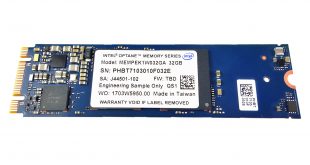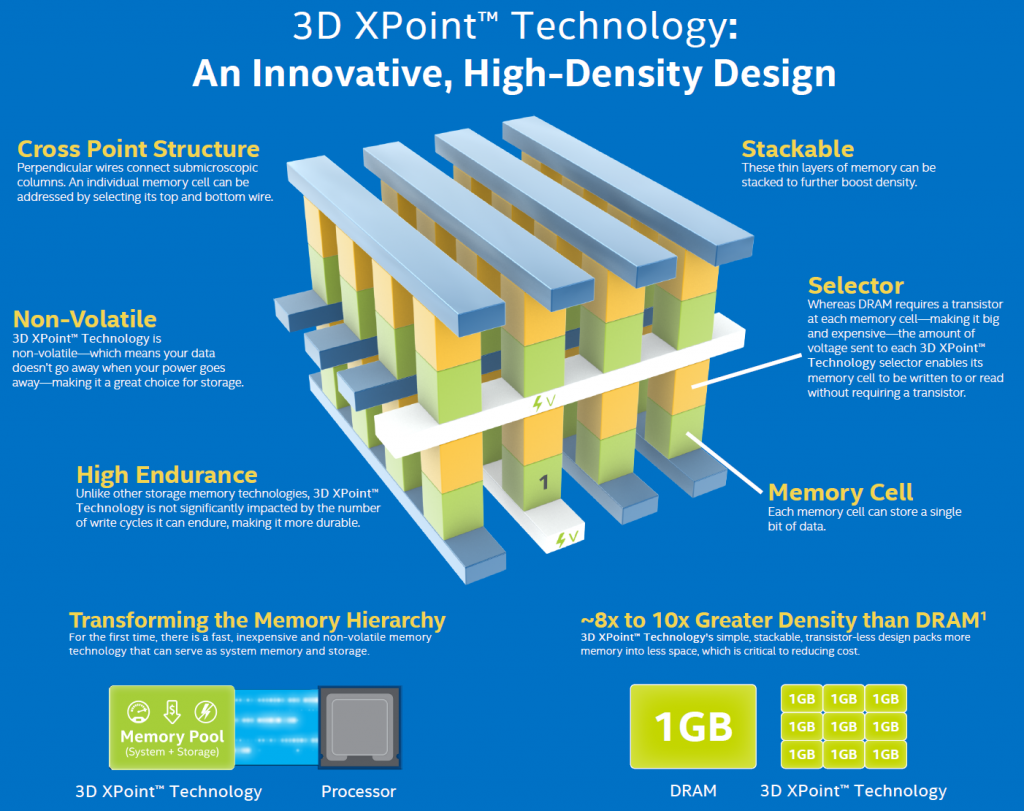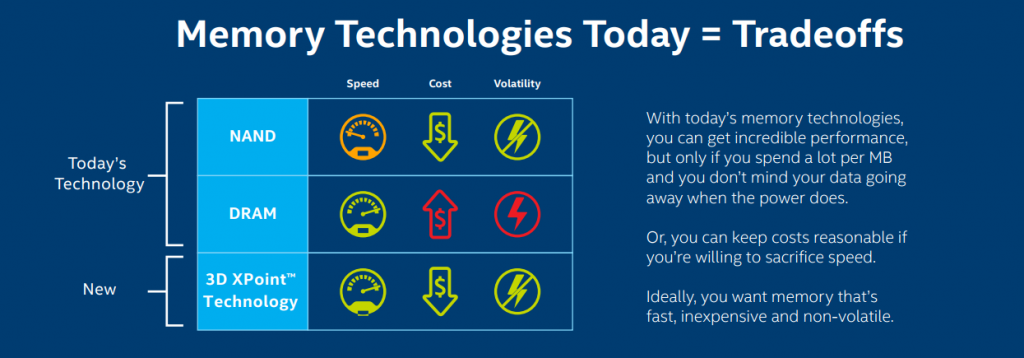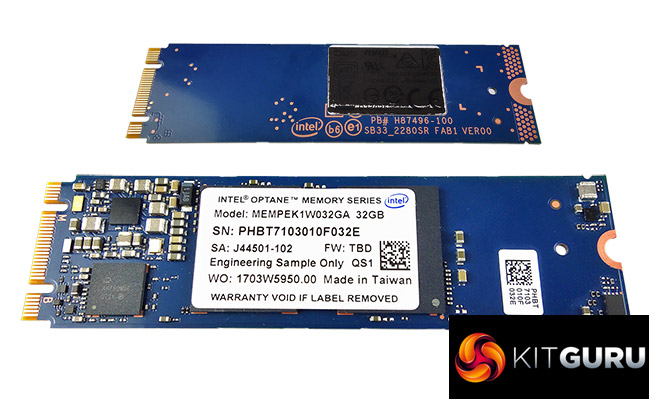
Optane is Intel's brand name for their 3D XPoint memory technology. The first Optane product to break cover was the Optane PC P4800X, a very high-performance SSD aimed at the Enterprise segment. Now we have the second product using the technology, this time aimed at the consumer market segment – the Intel Optane Memory module.
The Optane Memory module is built on a 2280 M.2 format using a PCIe 3.0 x2 interface, not the usual x4 PCIe 3.0 interface that the latest M.2 PCIe drives use. Intel quote Sequential Read performance for the 32GB Optane Memory module as 1,350MB/s, which is very impressive. Not nearly as impressive is the official Sequential write figure of just 290MB/s. Random 4K performance for the drive is quoted as up to 240,000 IOPS for reads and 65,000 IOPS for writes.
Endurance for the 32GB module is quoted as 185.5TB which works out around 100GB/day. Intel back the Optane Memory module with a 5 year warranty.
A clue as to what Intel sees the Optane Memory module being used for is that the device is only available in 16GB and 32GB versions. Although they can be used as boot drives at a pinch, Intel has another plan for the Optane Memory module. That is to blow the dust off an old idea to have another crack at trying to get the consumer market interested in the technology that is SSD caching.
Intel have been plugging away at SSD caching – combining a flash based device with a standard HDD to produce fast performing, large capacity storage sub systems for a very long time. Trying to persuade the consumer market that it's a technology worth pursuing has not been an easy sell by any stretch of the imagination.
Now that might well be set to change with the Optane Memory module, which offers the performance that was missing from previous attempts with the technology. That is all well and good but in the time frame it’s taken to get to this point, the consumer SSD market has been involved in a frantic price war which has seen the price of consumer SSDs drop to a level where 120GB or 240/250GB class drives are at a price point unimaginable even two years ago, making very fast primary storage easily obtainable.
3D XPoint

Jointly developed with Micron since 2012, Intel's 3D XPoint is the first new class of memory technology since Flash NAND was introduced in the early eighties. It has been designed to provide extremely fast, very low latency, high capacity storage devices and it has the potential to revolutionise the way we look at both system memory and storage systems as it has been designed, ultimately, to serve both areas.

3D XPoint sits between DRAM and NAND in terms of performance. Theoretically, 3D XPoint can work 100–1000 times faster than NAND, although for the time being current storage interfaces will put a limit on this advantage. The new memory is some 8-10 times denser than DRAM, which gives it a keen cost advantage over the older technology and has another major advantage over DRAM in that it is non-volatile.

The new memory is also much more durable than Flash NAND as 3D XPoint writes are, unlike Flash writes, non-destructive which should bring drives that far outstrip current Flash NAND technology endurance rates.
Physical Specifications:
Usable Capacities: 16GB, 32GB
NAND Components: 128Gb 20nm 3D XPoint
Interface: PCIe 3.0 x2
Form Factor: M.2 2280
NAND Controller: Intel
Dimensions: 22 x 80mm
Firmware Version: K3110300
Be sure to check out our sponsors store EKWB here
 KitGuru KitGuru.net – Tech News | Hardware News | Hardware Reviews | IOS | Mobile | Gaming | Graphics Cards
KitGuru KitGuru.net – Tech News | Hardware News | Hardware Reviews | IOS | Mobile | Gaming | Graphics Cards



